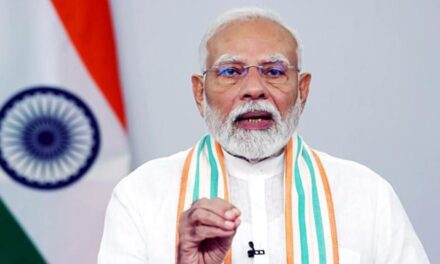 Huge trade imbalance is one of the major issues of concern for Bangladesh-China economic relations. Since the beginning, balance of trade has been overwhelming against Bangladesh and the growth rate of bilateral trade has remained highly in favour of China. Bangladesh’s trade with China in apparel, the highest export earning sector of Bangladesh, is also not satisfactory. China accounts for 47 per cent of Bangladesh’s textile imports and it is also the source of textiles for Pakistan and Vietnam, registering 71 per cent and 50 per cent respectively (McKinsey Global Institute, 2019). China is the largest source of fabric for Bangladesh’s readymade garment (RMG) sector followed by India. Bangladesh imports around $5 bn worth of fabric annually from China, while from India nearly worth $2 bn. Although China is one of the export destinations of Bangladeshi apparel items, mainly cotton-based, the export volume is too small compared to that of the European Union (EU) countries and the United States.
Huge trade imbalance is one of the major issues of concern for Bangladesh-China economic relations. Since the beginning, balance of trade has been overwhelming against Bangladesh and the growth rate of bilateral trade has remained highly in favour of China. Bangladesh’s trade with China in apparel, the highest export earning sector of Bangladesh, is also not satisfactory. China accounts for 47 per cent of Bangladesh’s textile imports and it is also the source of textiles for Pakistan and Vietnam, registering 71 per cent and 50 per cent respectively (McKinsey Global Institute, 2019). China is the largest source of fabric for Bangladesh’s readymade garment (RMG) sector followed by India. Bangladesh imports around $5 bn worth of fabric annually from China, while from India nearly worth $2 bn. Although China is one of the export destinations of Bangladeshi apparel items, mainly cotton-based, the export volume is too small compared to that of the European Union (EU) countries and the United States.
In 2009, Bangladesh’s total export to Chinese market under the Asia-Pacific Trade Agreement (APTA) preference scheme was $140.72 mn, of which apparel accounted for only $19.79 mn as against China’s total imports of apparels worth $1,651.75 mn. Export Promotion Bureau (EPB) data show Bangladesh exported garment items worth $391.60 mn to China in fiscal 2016-17, and it remained almost the same in fiscal 2017-18. On the other hand, Bangladesh exports 90 per cent of its garment products to the US and EU markets and ranks third in the EU markets, after China and Turkey. Total export of Bangladesh’s garment items was $19.32 bn to the EU in 2018 — up 11.17 per cent year-on-year. Likewise, the US is the single largest export destination for Bangladeshi apparel items. Export of Bangladesh’s apparel to the US jumped to 15.57 per cent, worth $1.63 bn, in the first three months of 2019. Earlier, Bangladesh ranked as the third largest supplier of clothing to the US in 2017 with export of $5 bn apparel products. Why is Bangladesh’s export of apparel to China not adequate? Several factors can be identified in this regard: First, both Bangladesh and China are the world’s major producers of apparel products.
The RMG industry is the largest foreign currency earning sector for Bangladesh that accounts for about 83 percent of the country’s total exports. The country has also set the target to export $50 bn garment products by 2021. China is the largest exporter of apparel products in the world accounting for 14 per cent of its exports with an average of $161 bn annual turn over having advantageous position in terms of technology, enormous production capacity, big size of clothing industry, and demand capacity. China’s share of RMG exports in the international market is about 35 per cent. Though China’s share in global apparel market has declined following rising production costs and transition to high-tech industries, the country still remains the largest supplier of apparel items in the world. As a result, China is one of the major competitors of Bangladesh in the world apparel market. Due to the competition, trade between the two countries, most particularly, Bangladeshi apparel exports to China, remained untapped. Second, all kinds of Bangladeshi apparel items including cotton and textiles do not fall under China’s Duty-Free and Quota-Free (DFQF) scheme for Least Developed Countries (LDCs). Currently, 4788 Bangladeshi products have DFQF access to Chinese market with 60 per cent coverage of China’s tariff lines. Third, non-tariff barriers such as Chinese Rules of Origin (RoO), other compliance issues, demand for high-end products, rising competitiveness from emerging economies are major reasons for less than desirable export to China. 40 per cent local value is allowed for LDC products under China’s WTO DFQF scheme, while the minimum local value content requirement for LDCs under the APTA is 35 per cent. It may be noted, the Canadian GSP RoO for all LDCs requires only 25 per cent domestic value addition. So, Bangladesh can comfortably export its major exportable products including apparel to Canada under the Canadian GSP scheme for LDCs. The EU permits one stage transformation in case of LDCs’ export of garment products e.g., fabric to clothing in European market, whereas it requires two stage transformation for exports from non-LDCs. Being an LDC, Bangladeshi garment export is currently benefiting from the EU’s single transformation rule for LDCs. In this regard, experts have raised concern about Chinese stringent RoO, and Bangladesh’s lack of diversified as well as high-value products. Fourth, there is the looming concern over the erosion of LDC-specific preferential treatment or tariff concessions after Bangladesh’s LDC graduation expectedly in 2024 with three-year transition until 2027. In this regard, Bangladesh’s top export products would face 6-14 per cent tariffs into Chinese market under the framework of the APTA or Most-Favoured-Nation (MFN). As for example, tariffs would be applied from 4-10 per cent for most jute products. However, China will continue to remain a lucrative export destination of Bangladeshi apparel items following China’s economic transformation from labour-intensive to high-tech manufacturing, high production cost, relocation of factories, and the growing demand of Chinese consumers.
 Huge trade imbalance is one of the major issues of concern for Bangladesh-China economic relations. Since the beginning, balance of trade has been overwhelming against Bangladesh and the growth rate of bilateral trade has remained highly in favour of China. Bangladesh’s trade with China in apparel, the highest export earning sector of Bangladesh, is also not satisfactory. China accounts for 47 per cent of Bangladesh’s textile imports and it is also the source of textiles for Pakistan and Vietnam, registering 71 per cent and 50 per cent respectively (McKinsey Global Institute, 2019). China is the largest source of fabric for Bangladesh’s readymade garment (RMG) sector followed by India. Bangladesh imports around $5 bn worth of fabric annually from China, while from India nearly worth $2 bn. Although China is one of the export destinations of Bangladeshi apparel items, mainly cotton-based, the export volume is too small compared to that of the European Union (EU) countries and the United States.
Huge trade imbalance is one of the major issues of concern for Bangladesh-China economic relations. Since the beginning, balance of trade has been overwhelming against Bangladesh and the growth rate of bilateral trade has remained highly in favour of China. Bangladesh’s trade with China in apparel, the highest export earning sector of Bangladesh, is also not satisfactory. China accounts for 47 per cent of Bangladesh’s textile imports and it is also the source of textiles for Pakistan and Vietnam, registering 71 per cent and 50 per cent respectively (McKinsey Global Institute, 2019). China is the largest source of fabric for Bangladesh’s readymade garment (RMG) sector followed by India. Bangladesh imports around $5 bn worth of fabric annually from China, while from India nearly worth $2 bn. Although China is one of the export destinations of Bangladeshi apparel items, mainly cotton-based, the export volume is too small compared to that of the European Union (EU) countries and the United States.




















